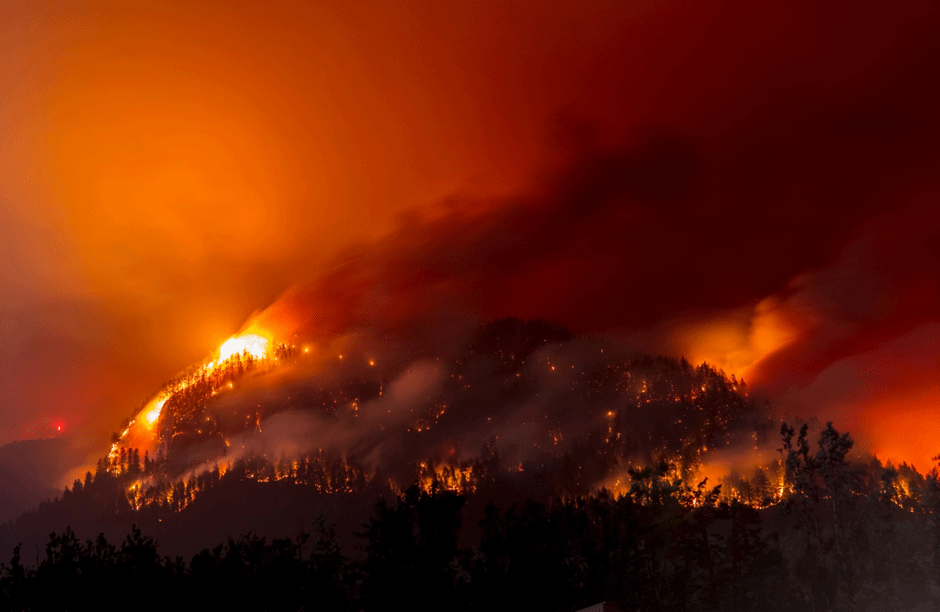Models of wildfire-wind feedback loops could help predict danger zones and improve preparedness, says Aijun Ding.
A heavy pall of smoke hung in the air when Nanjing University scientist, Aijun Ding, took a group of students on a field trip in June 2012. They were seeing first-hand the scale of air pollution caused by farmers burning straw in their fields in the suburbs of Nanjing.
Ding, a professor of atmospheric environment and atmospheric physics, was worried about the weather. The forecast was for high temperatures and thunderstorms. But by the end of the day no rain had fallen, and many students had complained they hadn’t been prepared for the chilly conditions. The weather forecast must have been seriously affected by the air pollution, Ding told the students, half-jokingly.
More than a decade on, that day of weird weather and the throwaway line about the impact of air pollution has sparked a new and exciting area of research.
Ding is now a world leader in the study of how particles in the air can create a local microclimate, and the effects this can have on weather. This includes how the sort of atmospheric pollution Ding and his students first spotted in Nanjing over a decade ago can modify weather, reducing critical rainfall1.
Recently, Ding has used data on large fires to demonstrate how the smoke can generate strong winds, which then help the blaze to spread.
“We show that wildfires can create their own weather, with large blazes spawning stormy plumes of clouds that can cause strong erratic winds that fan flames,” he says.

Wildfires, such as this blaze in the US state of Oregon, have been increasing in extent and intensity across the world in recent years.
Credit: DaveAlan/iStock/Getty Images Plus
Fire-weather feedback
In a 2023 study published in the journal Science2, Ding and colleagues looked at the impact of soot and other particles driven into the air during large wildfires in southeast Asia and the western United States.
For the US, the team analyzed data gathered during the August Complex fire that burned more than a million acres of Oregon in the summer of 2020. Modelling of the conditions revealed an intensive fire-weather feedback mechanism that made the situation worse.
The thick fire smoke reduced sunlight reaching the ground. The resulting surface cooling was more substantial over the land than the sea, which triggered offshore winds that dragged hot and dry air from further east. The surface cooling, combined with sunlight getting through and warming the upper air over the higher mountain slopes, caused further winds to form and blow through the mountain valleys, which helped the fire to spread.
In Asia, the researchers found that fire-weather feedback was different. The models showed that smoke caused by slash-and-burn agriculture also caused a temperature difference between the land and sea, because less sunlight penetrated to the ground. This time, the change in temperatures block the natural monsoon winds that transport water from over the sea to the land. This suppresses rainfall in fire-intensive regions, which delays the rainy season and allows the fires to burn for longer3.
Better fire prevention
Most work in the field of wildfires focuses on how climate change might be affecting the scale and intensity of blazes. These studies tend to focus on long-term trends, for example the year-to-year variability in wildfire risk and the El Nino-Southern Oscillation circulation system.
Ding’s group is unusual because it analyses the interaction between atmospheric physics and chemistry during the fires, to understand the key processes in fire-weather feedback.
Analysis of these systems should shed light on the causes of extreme wildfires and provide scientific support for how to cope with them.
“Though our work is basically fundamental research, we do think of some plausible measures for fire prevention and management,” Ding says. The feedback relationships identified in the study, for example, could indicate the location of ‘amplifier regions’. These regions are especially prone to the shifts in temperature caused by the blocking of sunlight, and so the most likely to contribute to more extreme burns.
Amplifier regions could be prioritized for fire prevention and control. This might mean more regular checks on combustible materials and spark-producing equipment, and an earlier response to outbreaks of fire, such as dousing the area with water or establishing control lines to prevent fires spreading.
Improved forcasting
Scientists might even help produce ‘fire forecasts’ that incorporate fire emissions into meteorological models, to predict when and where the feedback conditions pose the greatest risk, says Ding.
“The research could inform the complicated calculus of how to allocate scarce firefighting resources,” he explains. “The science is moving forward to understand which fires are going to be worse, so that we can prioritize our prevention and firefighting efforts.”
For the moment, Ding and his team are focusing on improving their models that analyze the relationships between the weather, fires, and atmospheric chemistry. This work will be an important contribution as fires burn more fiercely around the world each year.
“As large wildfires have been becoming increasingly common and more intensive in many regions, better understanding of this feedback is vital for a more coordinated and effective management of fire risk in a changing climate,” Ding says.
References
1. Ding, A.J. et al. Atmos. Chem. Phys. 13, 10545-10554 (2013)
2. Huang, X., Ding, K., Liu, J. et al. Science 379 (6631), 457-461 (2023)
3. Ding, K. et al. Nature Communications, 12, 6416 (2021) https://doi.org/10.1038/s41467-021-26728-4
Source: Office of Science and Technology
